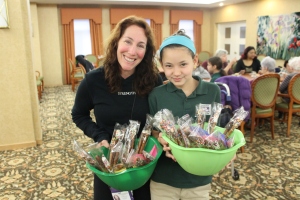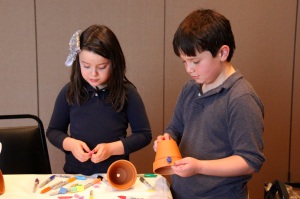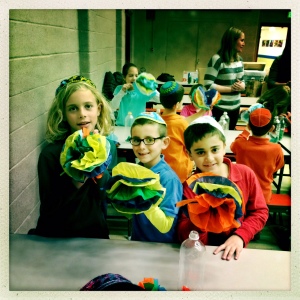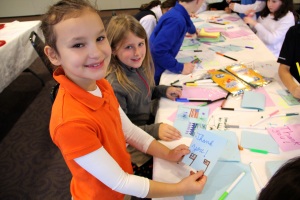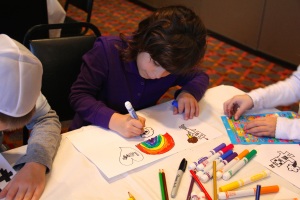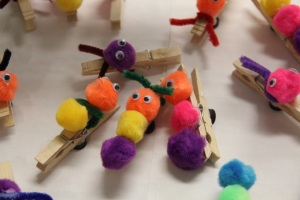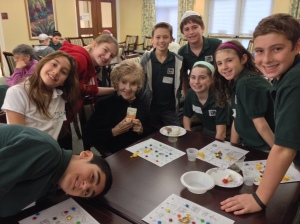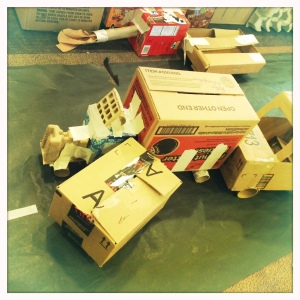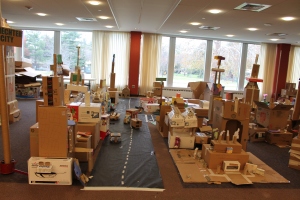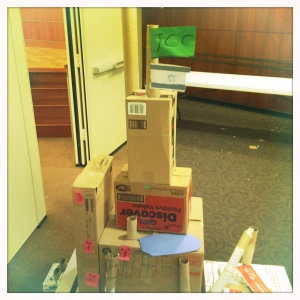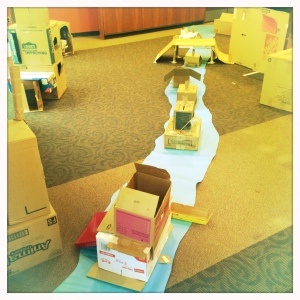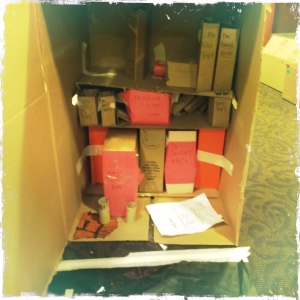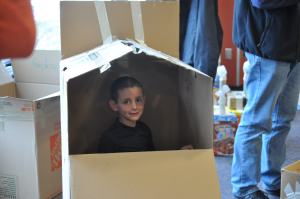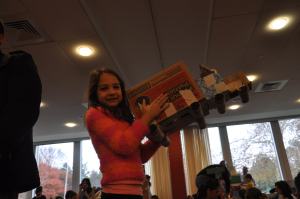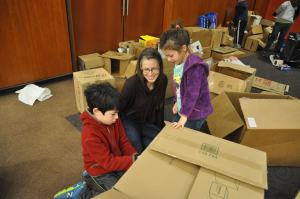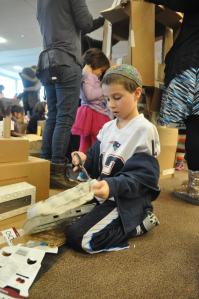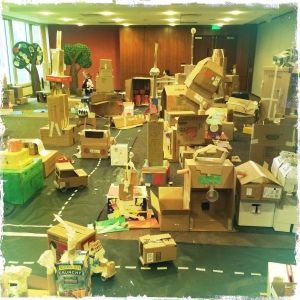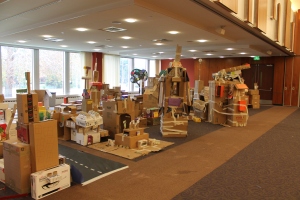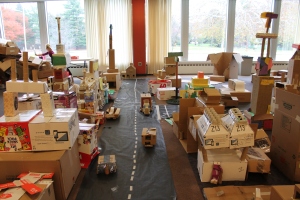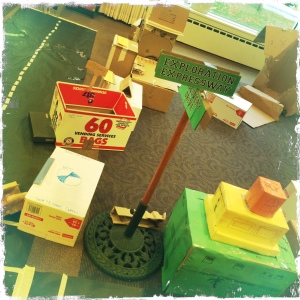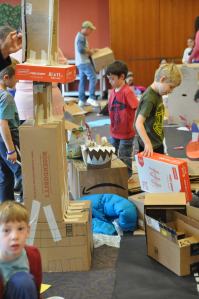Today is my last official day as Head of School at Krieger Schechter Day School. It has been three fulfilling years of being on a educational journey with all of you – students, teachers, parents and community members. Schools, while not infallible, are exciting laboratories for learning and exploration and Krieger Schechter is no exception. Our students are fortunate to be taught by some exceptional faculty and administrators who share a passion for teaching and learning. I feel privileged to have had this opportunity to work with many staff members and board members who care deeply both for their students and the school.
I’m looking forward to my new adventure in Boston where I will be consulting on a number of different projects focused around education and Jewish continuity. I am ready for a less frenetic pace of life (Does that ever really happen?) as we get settled into life in Massachusetts.
Many members of the community have been generous to my family and me. On behalf of Rebecca, Raviv and Danya, thank you for generously opening your hearts and homes to us. We are looking forward to maintaining the deep friendships that we have made and will always consider Baltimore a home for us to come back to.
While there is a lot to be quite proud of from the many initiatives that have taken place over these past three years, join me in reflecting on five of these initiatives that will leave a long-lasting impression on our school.
1) The creation of a “Vision of Good Teaching at Krieger Schechter” document – a educational continuum that has six standards with a number of specific elements within each standard. Each element contains descriptions of progress within that element, helping a teacher grow from beginning teacher to expert teacher in that particular area. The entire faculty was engaged with Dr. Vivian Troen from the Mandel Center at Brandeis University in an intensive 18 months of reflection as to our priorities as a faculty. Thank you to Andrea Kasper who helped lead different groups of faculty to design each standard. This document can be used with all faculty, both veteran and new, for growth and evaluation.
The six standards we designed were:
- Knowing Children As Learners
- Planning Instruction and Designing Learning Experiences for all students
- Engaging and Supporting All Students in Learning
- Assessing student learning
- Building a learning community rooted in Jewish experiences and values
- Developing as a professional educator
2) Develop Bo N’Daber: A social-emotional curriculum for KSDS – a fully developed scope & sequence and curricular lesson plan guide (K-8) that addresses the social-emotional needs of our students. Under the leadership of Dr. Sharon Buck and Kristen Wavle, a team of administrators (myself, Shelley Hendler, Saundra Madoff, Robyn Blum, Wendy Gelber, Cheri Crow) spent the 2012-2013 school year creating a curriculum that could be used by all of our faculty. It was a great team to work with and we owe them our thanks for their stellar work on this project. In the Middle School, an advisory period each week is now used for Bo N’Daber work. In the Lower School, the first 15 minutes of every day is used for Bo N’Daber. Both General & Judaic studies teachers are engaged in the curriculum. The curriculum takes the best of national programs like Responsive Classroom and adds a decidedly Jewish aspect to it. Posters hang around the school with the monthly themes so that students and faculty are reminded of the month’s focus. Sharon and Kristen spent countless hours researching and developing curriculum guides and materials for faculty members. Other schools have asked us to share with them the curriculum.
The monthly themes are:
September – Safe & Caring Community
October – My Support System
November – Emotions
December – Respecting Myself & Others
January – Being a Good Citizen
February – Teamwork
March – Conflict Resolution
April – The Power to Choose
May/June – Celebration of Self – Perseverance & Goal Setting
3) Introduction of Ta’am Shabbat at the end of the day on Fridays – allowing our students to separate the rest of the week and begin to get into Shabbat mode by welcoming Shabbat as a community.
Ta’am Shabbat was celebrated in many different forms at KSDS. Once a month, the entire school gathered by celebrating as a community. Different members of our school community would present during these gatherings. We also utilized this time to have school-wide Friend-to-Friend celebrations where cross-division programming would take place. Thank you to Robyn Blum, Josh Bender, and the countless faculty members at Krieger Schechter who have done incredible Judaics programming week after week all in the name of Ta’am Shabbat.
4) Elevating our annual campaign and successful participation in the Generations campaign. In 2014-15, we had the most successful year for annual campaign in the history of the school, raising over $530,000 to support all of the vital programming. Over these past three years, a huge debt of gratitude goes to Alison Wielechowski, Sarah Fried, and Janine Frier who led a team of professionals and lay leaders to such great success. We are especially proud of the work of that we did on the national PEJE Generations program that will eventually bring in close to $3,000,000 more in endowment for Krieger Schechter. Donations have come both in the form of immediate cash to the endowment and as legacy gifts committed over time. Thanks for the tenacity of current parent and former board member, Randy Getz, who challenged our school to be a part of this valuable initiative. It is his deep caring for our school that propelled us to stay involved in the program.
5) Deepening our presence in greater Baltimore. As we all know, the best marketers for our school are happy students and parents. It’s this buzz that will continue to make KSDS strong. But that is only one aspect of marketing; we must also constantly be thinking about reaching out to those who don’t know we exist yet. Thanks to the Admissions/Marketing/Community Relations team of Ilene Wise, Liz Minkin Friedman, Lindsey Brook and Marisa Obuchowski, we have creatively gotten our name out to new segments of both the Jewish and greater Baltimore community. Whether it was our year-long thematic approach to service learning, holding parent and baby classes, or having a bar night for city families, this team has been open about bringing new ideas for engagement.
I would be remiss if I didn’t publicly thank Rabbi Ron Shulman and KSDS Board Chairs Mark Neustadt and Michele Brill for being strong advocates for the school these past three years. All three of them care deeply about Krieger Schechter.
I wish my colleague and friend, Rabbi Moshe Schwartz, hatzlacha as he assumes the headship at Krieger Schechter. His energy is boundless (and you thought I had a lot, just wait!) and he is excited to serve the school as its next leader.
The screenwriters from the movie, “Annie,” wrote, “How lucky I am to have something that makes saying goodbye so hard.” It has been more than luck having these three years at Krieger Schechter; I know that I will continue to hear great things about this place because it is just that special.
L’Hitraot. (Until we meet again…)
